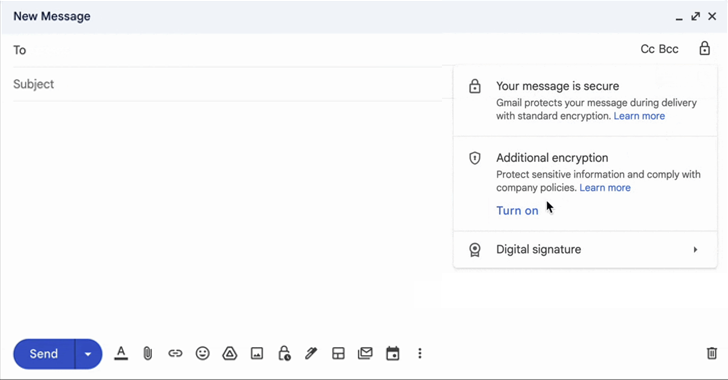Products You May Like
Google on Friday announced that its client-side encryption for Gmail is in beta to its Workspace and education customers to secure emails sent using the web version of the platform.
This development comes at a time when concerns about online privacy and data security are at an all-time high, and it is certainly welcomed by users who value the protection of their personal data.
To that end, Google Workspace Enterprise Plus, Education Plus, and Education Standard customers can apply to sign up for the beta until January 20, 2023. It’s not available to personal Google Accounts.
“Using client-side encryption in Gmail ensures sensitive data in the email body and attachments are indecipherable to Google servers,” the company said in a post. “Customers retain control over encryption keys and the identity service to access those keys.”
It is important to know that the new protection offered by Gmail is different from end-to-end encryption.
Client-side encryption, as the name implies, is a way to protect data at rest. It allows organizations to encrypt data on Google services with their own cryptographic keys. The data is decrypted on the client-side using keys that are generated and managed by a key management service, which is hosted in the cloud.
Google’s new feature requires administrators to set up an encryption key service through one of the company’s partner services which are offered by Flowcrypt, Fortanix, Futurex, Stormshield, Thales, or Virtru, or alternatively, build their own service using its client-side encryption API.
This means the data is protected from unauthorized access, even from the server or the service provider. However, the organization or administrator has control over the keys and can monitor users’ encrypted files or revoke a user’s access to the keys, even if it was generated by the user themselves.
On the other hand, end-to-end encryption (E2EE) is a method of communication in which information is encrypted on the sender’s device and can be decrypted only on the recipient’s device with a key known only to the sender and the recipient.
With that said, the new option – limited to the web browser for now – permits users to send and receive encrypted emails both within and outside of their domains. The encryption covers email body and attachments, including inline images, but not the subject and recipient lists.
Gmail is not the only Google product with client-side encryption turned on. The tech giant enabled the same functionality for Google Drive last year and Google Meet earlier this August. A similar test for Google Calendar ended on November 11, 2022.
It’s worth noting that Google Drive apps for desktop as well as Android and iOS support client-side encryption. Google said that the feature will be integrated into mobile apps for Meet and Calendar in an upcoming release.
“Client-side encryption helps strengthen the confidentiality of your data while helping to address a broad range of data sovereignty and compliance needs,” the company further added.

